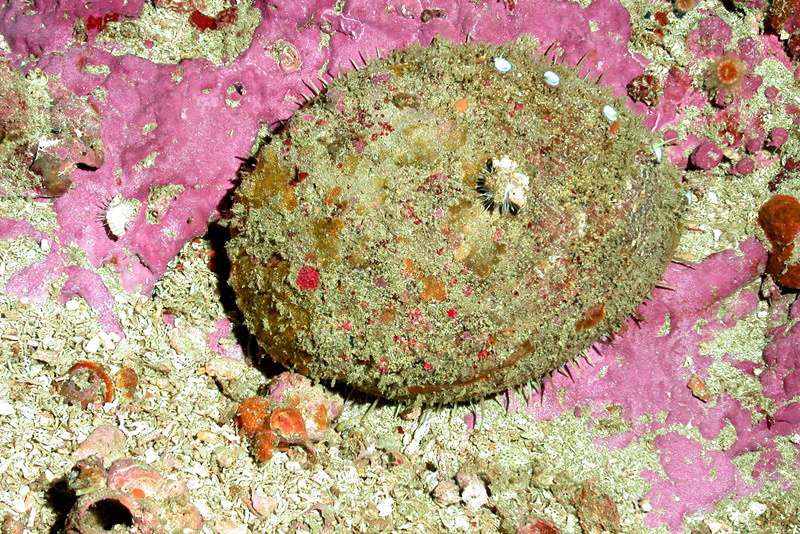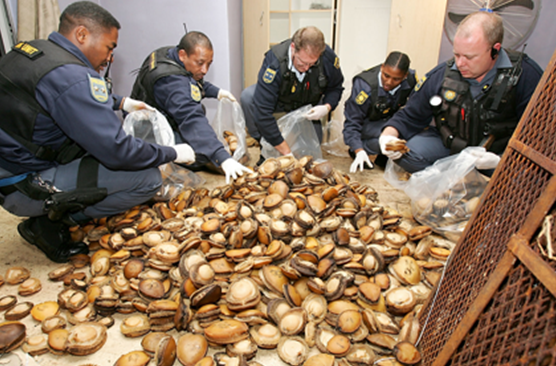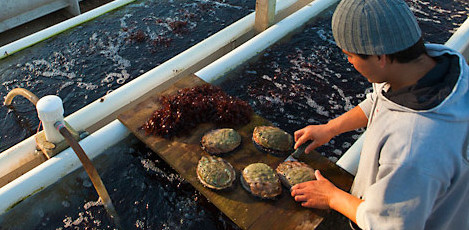Abalone poaching is a hot topic in South Africa, but what is it all about?
What are Abalone?
Abalone are a large species of snail found in temperate water environments in several areas around the world. They occur in Kelp forests and rocky reefs and play a very important role in the marine ecosystem helping stabilize these marine habitats in terms of community structure. Large declines in Abalone populations are altering the coastlines around the world.



Where have they all gone?
The fleshy foot of Abalone is considered an aphrodisiac in Asian culture, creating a huge demand for these snails and making them a valuable commodity in the export trade from South Africa to China. Abalone is a lucrative market with retail prices on the Hong Kong markets having exceeded $3000 per kilogram. Since the early 1990’s abalone has been driven into a sever poaching crisis with more than 2,000 tonnes of abalone poached each year along the South African coastline. It is estimated that the South African abalone trade is worth $60 million per year.
Most efforts to try and get the poaching crisis under control have failed and today Abalone poaching is now at its highest levels in the last 20 years. Abalone takes 7 years to reach sexual maturity, so populations take a long time to recover from such decimation of stocks, meaning at current rates abalone is very quickly heading towards a population collapse and extinction.
Why has the poaching got so bad in South Africa?
Abalone poaching is not unique to South Africa, it occurs all over the world. However, not on the scale that it is currently decimating the stocks here. The illegal trade of Abalone has exploded in recent years in South Africa. This is likely due to the unique social-economic circumstances that still occur 25 years post-apartheid. South Africa has one of the largest income inequalities and unemployment is extremely high. Furthermore, fishing communities have been dealt a heavy blow with reduced fishing permits due to shrinking fisheries quotas. Abalone poaching is a quick way to earn good money and poverty is clear to see in many communities, still feeling the effects of apartheid and left with few options, they turn to desperate measures to feed and provide for their families.
The abalone underworld is run by large and very well organised Chinese criminal groups in collaboration with local street gangs. Abalone poachers are paid in cash or often drug addicts are exploited for their disease and poached abalone is exchanged for crystal meth and heroin. Poaching provides several job roles within the community, from boat skippers, divers, carriers, middle men who buy and sell the abalone, even kids work as lookouts and grandmothers stash abalone in their freezers for a price and the smugglers, taking the snails across Southern African boarders and stashing them before sending them to their final destination, China.
What is being done about it?
There are several organizations fighting the poaching crisis, such as the Marine Anti-Poaching Unit (MAPU), Department of Agriculture, Forestry and Fisheries (DAFF), South African Police Service (SAPS), World Wide Fund (WWF) and Cape Nature. Over the last few years there have been successful arrests and convictions of kingpins and smugglers. However, despite these arrests, the problem is far too big and complex, and tonnes of illegal abalone go undetected each year as they pass through boarders on route to Hong Kong due to corrupt policing turning a blind eye.
How to prevent this kind of exploitation of species?
Poaching is at crisis levels here due to the unique socioeconomic circumstances. The lack of jobs for the local fishing communities needs to be addressed for the people to have an attractive alternative to illegal activities in order to provide for their families.
Abalone aquaculture could be the best way to fight the war against poaching. Farmed Abalone is a growing business and farms are supplying the abalone market with legal sustainable and high-quality product. These farms can house up to three million abalone at any one time, from larval stage through to fully mature adults the size of your hand. Five hundred tonnes of abalone are exported per year and supply hundreds of low skilled jobs for the local communities. As Abalone takes such a long time to reach maturity, these farms are the only way to be sure that your abalone has come from a sustainable source in the future.


1 Comment
Perlemoen - Luistervink Stories · April 3, 2023 at 2:11 pm
[…] Barron, M. (2018). A deeper look at abalone poaching in South Africa by Cape Radd [aanlyn]. Besigtig op 13 April 2022 by https://www.caperadd.com/news/a-deeper-look-at-abalone-poaching-in-south-africa/ […]